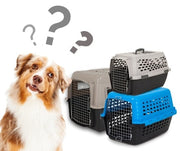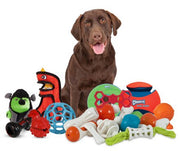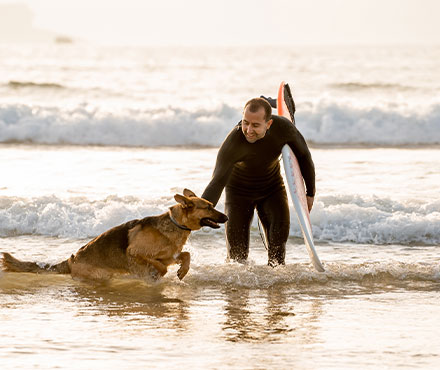How to Properly Fit Prong & Chain Collars

Whether you’re a man or woman, you probably tote a wallet or handbag to fit all of your belongings from day to day. If your wallet or handbag is too bulky or too small, it makes for an uncomfortable fit. Now, we haven’t seen any pets toting around a wallet or handbag these days, but we have seen our share of ill-fitting collars and leashes, especially ones of the prong or chain variety.
Our Patented Comfort Design
Petmate® offers a wide selection of durable and comfortable prong and chain collars. We have carefully designed all of our collars, leashes and harnesses with your pet’s comfort in mind. Our Comfort Chain Collars & Leashes feature nylon woven through the chain to ensure that this patented training tool is comfortable yet effective.
Prong & Chain Fitting
While these types of collars are specifically designed for training your dog to be obedient, by no means should your dog ever feel discomfort from the collar or harness. Unfortunately some trainers use these collars inappropriately to correct or punish the dog for unwanted behavior, thus causing these products to be seen in a negative light.
When used correctly, these training tools can help your dog remember to associate the collars, leashes and harnesses with positive feelings.
Chain collars are constructed of metal links that are designed to help control your dog by tightening up around your dog’s neck. The proper fitting for this chain is to sit high up on your dog’s neck, just behind his ears.
Prong collars include a control loop that’s attached to the leash. This loop fits around your dog’s neck and is made of fang-shaped metal links or prongs, with blunt-like points. The size of the prong links should be appropriate for your dog’s size.
This prong variety should sit high up on your dog’s neck, just behind his ears. The fit should be snug so that the prong links don’t shift to the front of your dog’s neck and accidentally pinch your dog’s trachea.
To ensure that you’re using the chain or prong collar in the appropriate manner, please contact a seasoned obedience dog trainer in your area, as inappropriate use of this product could cause injuries to blood vessels in your dog’s eyes, trachea, and esophagus as well as nerve damage and can even be fatal.
Previous article

Next article

Related posts
View all-

Activities To Do With A Dog That Loves Water
Some dog breeds seem to be happy to play in the water all day if you let them. For these pups, there are plenty of summer activities that will keep them entertained. Here are examples you can do with a dog that loves to splash and play in the water. Read Article -

How to Get My Cat to Use His Scratching Post
Many cats prefer scratching furniture over a post, leaving their owners frustrated with shredded sofas and clawed-up carpets. But don’t worry—getting your cat to use a scratching post instead of your couch is possible with the right approach.
Read Article -

How to Get My Cat to Stop Using My Chairs as Scratching Posts
If your cat is turning your dining chairs into their personal scratching post, you’re not alone. Many cats scratch furniture, and while it’s frustrating, it’s also completely normal. Scratching isn’t just about sharpening their claws—it’s how cats stretch, mark their territory with scent glands, and relieve stress.
Read Article



